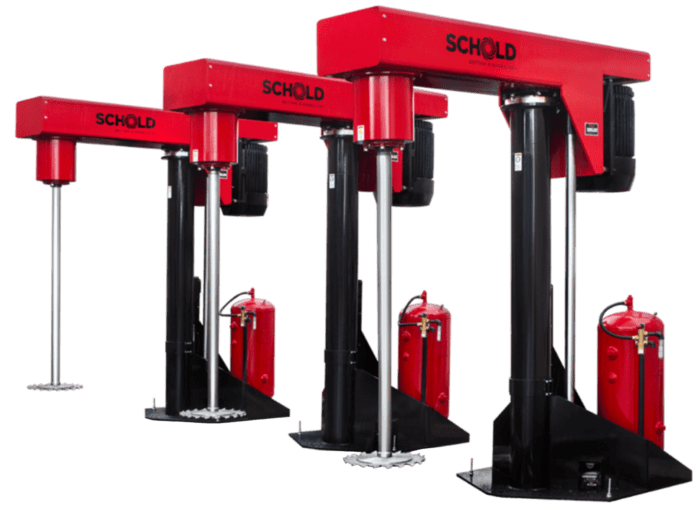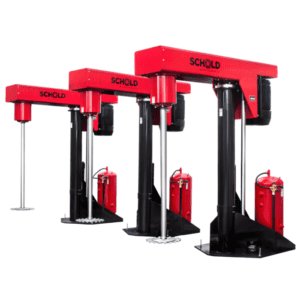5 Ways to Keep your Industrial Mixer Running Like New
1. Size Your Industrial Mixer Based on the Application
Many customers request a machine which is capable of processing several different product mixes. If the products are similar enough in viscosity and batch size, this is usually possible and preferred. However, in cases where the products are very different in those regards, sizing a mixer which would be capable of mixing both can be difficult or impossible. In these cases, providing a mixer sized between optimal for both products means that the customer will typically be running this mixer well outside of its ideal range. This causes inefficient mixing, damaged parts and downtime. This is often more frustrating and costly in the long run than purchasing two machines – each optimally sized for its own application.
Typically you will need 7.2-10HP per 100 gallons of product, but this will depend on viscosity and density of your application. Schold can help you determine the best strategy for your specific application.

2. Run Your Industrial Mixer at Proper Speeds
Dispersers are capable, and designed to run at tip speeds between 4800 and 5500 FPM. Running the disperser at lower than optimal speeds does not generate the internal shear necessary to disperse products. Doing so for prolonged periods of time could overheat the motor (VFD controlled machines) as it is not running fast enough to adequately cool itself. Speeds above 5500 FPM are no more effective at dispersion and consume much more motor power. Ensure that your mixer/disperser is properly sized for the product to be processed.
3. Avoid Dumping All Solid Ingredients at Once
Add liquid product to the solution first. Once the mixer is running well in the liquid material, add solids gradually so that they are absorbed and dispersed as they are introduced. Bulk or surge loading the machine puts extreme stress on the blade and motor and can cause enough radial force to bend the shaft.
4. Make Sure Product Liquid Level is Correct Distance from the Blade (At Rest)
The mixer is most efficient when it is creating a vortex. A steady vortex signifies that there is turbulent flow, which is ideal for mixing different substances together. The vortex pulls the liquid directly toward the blade, while raising the liquid level against the tank walls. Even in full vortex the liquid level must fully cover the blade. Filling the tank so that the liquid is 1.5 to 2.0 blade diameters above the blade face (at rest) will almost always guarantee that the blade will still be covered under full vortex. However, due to different product viscosities and tank geometries, the operator must always monitor the vortex as the mixer speed is increased to ensure the blade is still completely covered as the vortex grows.
5. Clean and Maintain Your Industrial Mixer Regularly
Clean the shaft and blade as regularly as production allows. Production build-up on the shaft can cause imbalance and even bend it in extreme cases. Clear the motor, gearbox, and drive components (belts, pulleys, bearings, etc.) from dust regularly to prevent overheating. Grease all fittings weekly. Splatter build-up can cause leaks in the piston seal, so be sure to clean all splatter from the piston regularly. If this is a problem at your plant, Schold can provide a custom guard to protect the piston from splatter. Replace lip seals, belts, and other wear parts when an inspection shows fatigue. Replacement Parts & Service and Preventative Maintenance is KEY.
Every manufacturer has limitations, but we will work with you to find a CUSTOM solution. Let us know how we help!

